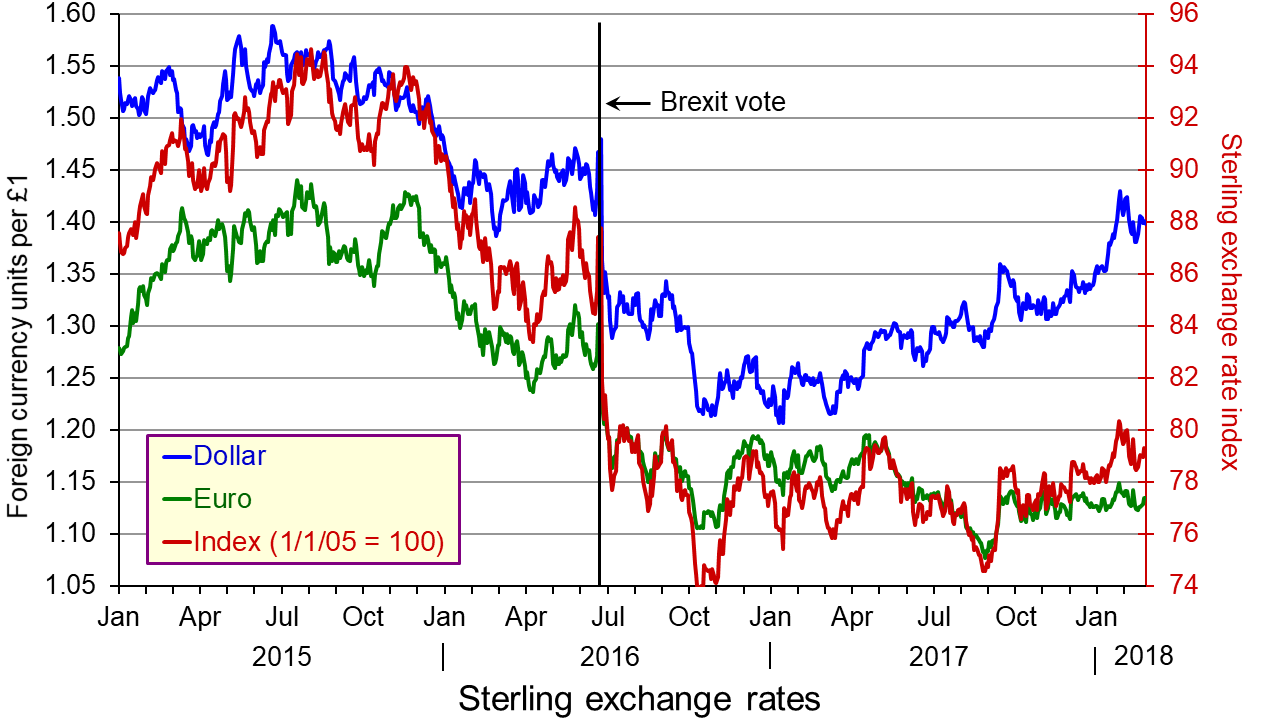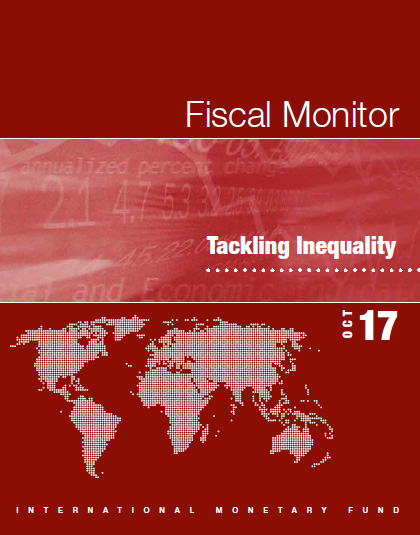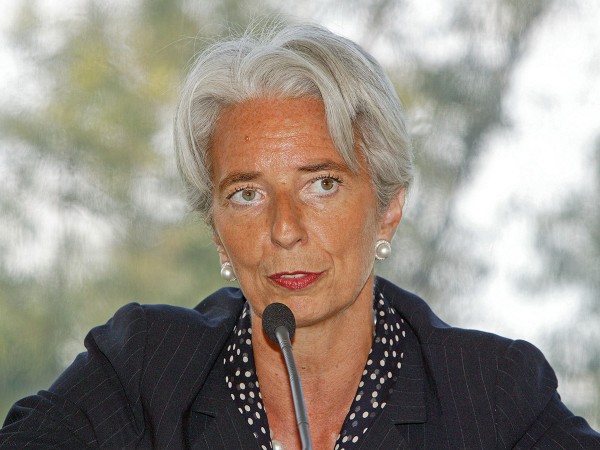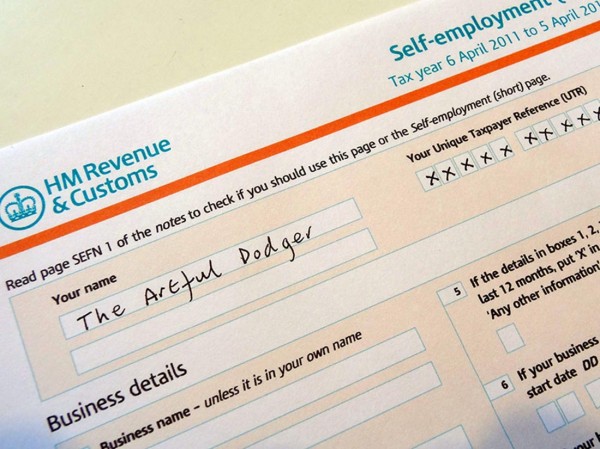 Senior Bank of England officials appeared before the House of Commons’ Treasury Select Committee on 21 February to report on the state of the economy and the future path for inflation and interest rates. One topic considered was the role of depreciation.
Senior Bank of England officials appeared before the House of Commons’ Treasury Select Committee on 21 February to report on the state of the economy and the future path for inflation and interest rates. One topic considered was the role of depreciation.
The pound has depreciated since the referendum on EU membership in June 2016. The exchange rate index today is some 9% below that before the referendum and 15% below the peak a year before the referendum.
It had fallen as much as 14% by October 2016 below the level before the referendum and 20% below its peak, pushed down partly by the cut in Bank Rate from 0.5% to 0.25% following the referendum. In November 2017, the Bank’s Monetary Policy Committee raised Bank Rate back to 0.5%. Two or three more rises of 25 basis points are expected over the next couple of years. This has helped to strengthen sterling somewhat. (Click here for a PowerPoint of the chart below.)
But has the depreciation been advantageous or disadvantageous to the economy? Here the Governor (Mark Carney) and the Chief Economist (Andy Haldane) appeared to differ. Andy Haldane said:
A combination of the weaker pound and a stronger global economy has worked its magic. That has meant that net trade has been a significant contributor, and we expect those effects to continue over the next two or three years. … Depreciations work, and that’s how they work.
By contrast, Mark Carney said:
Depreciations don’t work. They have an economic effect, but they’re not a good economic strategy. They may be an outcome of various things … but it’s how you make yourself poorer.
Are these statements contradictory or are they simply emphasising different effects of depreciation?

Both Andy Haldane and Mark Carney would accept that a depreciation makes imports more expensive and thus reduces real incomes (at least in the short run). They would also accept that a depreciation makes exports priced in pounds cheaper in foreign currency terms and thus can boost the demand for exports.
There is disagreement over two things, however. The first is the effect on people’s real incomes in the long run. Will any fall in real incomes from higher-priced imports in the short run be offset in the long run by higher economic growth?
This relates to a second area of disagreement. This is whether a depreciation can act as a significant driver for exports over the longer term. The increased incentive on the demand side (from consumers abroad to buy UK exports) could be offset by a disincentive for exporters to become more efficient and/or to compete in terms of quality. In other words, although it can give exporters a price advantage, the crucial question is the extent to which they take advantage of this, or merely take higher profits.
The disagreements thus relate primarily to the incentive effects over the longer term.
Articles
Bank of England governor says Brexit has made us poorer – as it happened The Guardian, Graeme Wearden (21/2/18)
Brexit will knock 5% off wage growth, says Mark Carney The Guardian, Phillip Inman (21/2/18)
Video
 Treasury Committee: Wednesday 21 February 2018 Parliamentlive.tv (21/2/18) (see from 16:08:00)
Treasury Committee: Wednesday 21 February 2018 Parliamentlive.tv (21/2/18) (see from 16:08:00)
Bank of England documents
Treasury Select Committee hearing on the February 2018 Inflation Report Bank of England (21/2/18)
Inflation Report – February 2018 Bank of England (8/2/18)
Data
Interest & exchange rates data Bank of England
Questions
- How does a depreciation affect the demand for and supply of imports and exports?
- What determines the size of the effect on inflation of a depreciation?
- What is the significance of the price elasticity of demand for and supply of sterling in determining the size of depreciation resulting from a change in confidence or a change in interest rates?
- How does productivity growth impact on the effectiveness of a depreciation in leading to higher economic growth?
- In what ways might a depreciation affect productivity growth?
 The latest edition of the IMF’s Fiscal Monitor, ‘Tackling Inequality’ challenges conventional wisdom that policies to reduce inequality will also reduce economic growth.
The latest edition of the IMF’s Fiscal Monitor, ‘Tackling Inequality’ challenges conventional wisdom that policies to reduce inequality will also reduce economic growth.
While some inequality is inevitable in a market-based economic system, excessive inequality can erode social cohesion, lead to political polarization, and ultimately lower economic growth.
The IMF looks at three possible policy alternatives to reduce inequality without damaging economic growth
The first is a rise in personal income tax rates for top earners. Since top rates have been cut in most countries, with the OECD average falling from 62% to 35% over the past 30 years, the IMF maintains that there is considerable scope of raising top rates, with the optimum being around 44%. Evidence suggests that income tax elasticity is low at most countries’ current top rates, meaning that a rise in top income tax rates would only have a small disincentive effect on earnings.
 An increased progressiveness of income tax should be backed by sufficient taxes on capital to prevent income being reclassified as capital. Different types of wealth tax, such as inheritance tax, could also be considered. Countries should also reduce the opportunities for tax evasion.
An increased progressiveness of income tax should be backed by sufficient taxes on capital to prevent income being reclassified as capital. Different types of wealth tax, such as inheritance tax, could also be considered. Countries should also reduce the opportunities for tax evasion.
The second policy alternative is a universal basic income for all people. This could be achieved by various means, such as tax credits, child benefits and other cash benefits, or minimum wages plus benefits for the unemployed or non-employed.
The third is better access to health and education, both for their direct effect on reducing inequality and for improving productivity and hence people’s earning potential.
In all three cases, fiscal policy can help through a combination of taxes, benefits and public expenditure on social infrastructure and human capital.
But a major problem with using increased tax rates is international competition, especially with corporation tax rates. Countries are keen to attract international investment by having corporation tax rates lower than their rivals. But, of course, countries cannot all have a lower rate than each other. The attempt to do so simply leads to a general lowering of corporation tax rates (see chart in The Economist article) – to a race to the bottom. The Nash equilibrium rate of such a game is zero!
Videos
 Raising Taxes on the Rich Won’t Necessarily Curb Growth, IMF Says Bloomberg, Ben Holland and Andrew Mayeda (11/10/17)
Raising Taxes on the Rich Won’t Necessarily Curb Growth, IMF Says Bloomberg, Ben Holland and Andrew Mayeda (11/10/17)
 The Fiscal Monitor, Introduction IMF (October 2017)
The Fiscal Monitor, Introduction IMF (October 2017)
 Transcript of the Press Conference on the Release of the October 2017 Fiscal Monitor IMF (12/10/17)
Transcript of the Press Conference on the Release of the October 2017 Fiscal Monitor IMF (12/10/17)
Articles
Higher taxes can lower inequality without denting economic growth The Economist, Buttonwood (19/10/17)
Trump says the US has the highest corporate tax rate in the world. He’s wrong. Vox, Zeeshan Aleem (31/8/17)
Reducing inequality need not hurt growth Livemint, Ajit Ranade (18/10/17)
IMF: higher taxes for rich will cut inequality without hitting growth The Guardian, Larry Elliott and Heather Stewart (12/10/17)
IMF Fiscal Monitor
IMF Fiscal Monitor: Tackling Inequality – Landing Page IMF (October 2017)
Opening Remarks of Vitor Gaspar, Director of the Fiscal Affairs Department at a Press Conference Presenting the Fall 2017 Fiscal Monitor: Tackling Inequality IMF (11/10/17)
Fiscal Monitor, Tackling Inequality – Full Text IMF (October 2017)
Questions
- Referring to the October 2017 Fiscal Monitor, linked above, what arguments does the IMF use for suggesting that the optimal top rate of income tax is considerably higher than the current OECD average?
- What are the arguments for introducing a universal basic income? Should this depend on people’s circumstances, such as the number of their children, assets, such as savings or property, and housing costs?
- Find out the details of the UK government’s Universal Credit. Does this classify as a universal basic income?
- Why may governments reject the IMF’s policy recommendations to tackle inequality?
- In what sense can better access to health and education be seen as a means of reducing inequality? How is inequality being defined in this case?
- Find out what the UK Labour Party’s policy is on rates of income tax for top earners. Is this consistent with the IMF’s policy recommendations?
- What does the IMF report suggest about the shape of the Laffer curve?
- Explain what is meant by tax elasticity and how it relates to the Laffer curve?
 The annual Sveriges Riksbank Prize in Economic Sciences in Memory of Alfred Nobel, normally known as the Nobel Prize in Economics, has been awarded 49 times since it was founded in 1969. Many well-known economists have been recipients of the award. This year it had been awarded to Richard Thaler for his research in behavioural economics. The award recognises his work in integrating economics with psychology.
The annual Sveriges Riksbank Prize in Economic Sciences in Memory of Alfred Nobel, normally known as the Nobel Prize in Economics, has been awarded 49 times since it was founded in 1969. Many well-known economists have been recipients of the award. This year it had been awarded to Richard Thaler for his research in behavioural economics. The award recognises his work in integrating economics with psychology.
Richard H. Thaler has incorporated psychologically realistic assumptions into analyses of economic decision-making. By exploring the consequences of limited rationality, social preferences, and lack of self-control, he has shown how these human traits systematically affect individual decisions as well as market outcomes.
In total, Richard Thaler’s contributions have built a bridge between the economic and psychological analyses of individual decision-making. His empirical findings and theoretical insights have been instrumental in creating the new and rapidly expanding field of behavioural economics, which has had a profound impact on many areas of economic research and policy.
Instead of making the assumption that people are rational maximisers, behavioural economists look at how people actually behave and respond to various incentives.
For example, people may be motivated by concepts of fairness and be prepared to make personal sacrifices for the sake of others. Such concepts of fairness tend to depend on the social context in which choices are made and can be influenced by the way choices are framed.
Also people may not weigh up costs and benefits but use simple rules of thumb, or heuristics, when making decisions. This might be an example of rational behaviour when time or information is limited, but the use of such heuristics often becomes engrained in behaviour and the rules become just habit.
People may also suffer from a lack of willpower or ‘present bias’. They may spend more than they can afford because they cannot resist the temptation to have a product. They may overeat because of the short-term pleasure it brings and ignore the long-term effects on their health.
 Understanding how people make choices and the temptations to which they succumb can help policymakers devise incentives to change behaviour to achieve various social goals.
Understanding how people make choices and the temptations to which they succumb can help policymakers devise incentives to change behaviour to achieve various social goals.
One type of incentive is nudging. A well-known example is people’s choice about whether to become an organ donor in the event of their death. If people are required to opt in to such a scheme, they may never get round to doing so. However, if they are required to opt out if they do not want to participate, many more people would thereby be donors and more organs would become available.
Another form of nudge is making desirable things fun. A well-known experiment here was encouraging people to use the stairs rather than the escalator when exiting a subway by making the stairs like a musical keyboard. See here for more examples.
The UK government set up a Behavioural Insights Team – also known as the Nudge Unit (now independent of government) to find ways of encouraging people to behave in their own or society’s best interests.
But it is not just governments which use the insights of behavioural economists such as Thaler. The advertising and marketing industry is always examining the most effective means of influencing behaviour. A classic example is the loss leader, where consumers are tempted into a shop with a special offer and then end up buying more expensive items there rather than elsewhere.
Firms and advertisers know only too well the gains from tempting people to buy items that give them short-term gratification – such as putting chocolate bars by the tills in supermarkets.
 Understanding consumer psychology helps firms to manipulate people’s choices. And such manipulation may not be in our best interests. If we are being persuaded to buy this product or that, are we fully aware of what’s going on and how our tastes are being affected? Would we, by standing back and reflecting, make the same choices as we do on impulse or out of habit?
Understanding consumer psychology helps firms to manipulate people’s choices. And such manipulation may not be in our best interests. If we are being persuaded to buy this product or that, are we fully aware of what’s going on and how our tastes are being affected? Would we, by standing back and reflecting, make the same choices as we do on impulse or out of habit?
And governments too can seek to manipulate people in ways that some may find undesirable. Governments may try to influence us to follow their particular political agenda – as may newspapers. Certainly, during election or referendum campaigns, we are being nudged to vote a particular way.
It is important then for us to understand when we are being nudged or otherwise persuaded. Do we really want to behave in that way? Just as it is important, then, for governments and firms to understand individuals’ behaviour, so too it is important for individuals to understand their own behaviour.
Articles
Richard Thaler’s work demonstrates why economics is hard The Economist, RA (11/10/17)
Nobel in Economics Is Awarded to Richard Thaler The New York Times, Binyamin Appelbaum (9/10/17)
The Making of Richard Thaler’s Economics Nobel The New Yorker, John Cassidy (10/10/17)
Nobel prize in economics awarded to Richard Thaler The Guardian, Richard Partington (10/10/17)
Richard Thaler is a controversial Nobel prize winner – but a deserving one The Guardian, Robert Shiller (11/10/17)
What the mainstreaming of behavioural nudges reveals about neoliberal government The Conversation, Rupert Alcock (17/10/17)
This year’s economics Nobel winner invented a tool that’s both brilliant and undemocratic Vox, Henry Farrell (16/10/17)
How a critic of economics became the disciplines Nobel-winning best friend The Guardian, Tiago Mata and Jack Wright (25/10/17)
Podcast
 How Richard Thaler changed economics BBC, More of Less, Tim Harford (14/10/17)
How Richard Thaler changed economics BBC, More of Less, Tim Harford (14/10/17)
Questions
- For what reasons may individuals not always weigh up the costs and benefits of purchasing an item?
- Give some examples of the use of heuristics in making consumption decisions?
- Is the use of heuristics irrational?
- Explain how people considering that they have behaved fairly is influenced by the social context of their behaviour?
- Find out what is meant by the Dictator Game and how it can challenge the assumption that people behave selfishly. How is the ‘dictator’s’ behaviour affected by the possible payoffs?
- Thaler suggested that Brexit could be an example of behavioural economics in action. Find out what he meant by this. Do you agree?
- Give some examples of ways in which the government can nudge people to persuade them to behave in socially or individually desirable ways.
- Find out what is meant by the ‘endowment effect’ and how it influences people’s valuation of items they own.
- Why may nudging by governments be undemocratic?
 According to Christine Lagarde, Managing Director of the IMF, the slow growth in global productivity is acting as a brake on the growth in potential income and is thus holding back the growth in living standards. In a recent speech in Washington she said that:
According to Christine Lagarde, Managing Director of the IMF, the slow growth in global productivity is acting as a brake on the growth in potential income and is thus holding back the growth in living standards. In a recent speech in Washington she said that:
Over the past decade, there have been sharp slowdowns in measured output per worker and total factor productivity – which can be seen as a measure of innovation. In advanced economies, for example, productivity growth has dropped to 0.3 per cent, down from a pre-crisis average of about 1 per cent. This trend has also affected many emerging and developing countries, including China.
We estimate that, if total factor productivity growth had followed its pre-crisis trend, overall GDP in advanced economies would be about 5 percent higher today. That would be the equivalent of adding another Japan – and more – to the global economy.
So why has productivity growth slowed to well below pre-crisis rates? One reason is an ageing working population, with older workers acquiring new skills less quickly. A second is the slowdown in world trade and, with it, the competitive pressure for firms to invest in the latest technologies.
 A third is the continuing effect of the financial crisis, with many highly indebted firms forced to make deep cuts in investment and many others being cautious about innovating. The crisis has dampened risk taking – a key component of innovation.
A third is the continuing effect of the financial crisis, with many highly indebted firms forced to make deep cuts in investment and many others being cautious about innovating. The crisis has dampened risk taking – a key component of innovation.
What is clear, said Lagarde, is that more innovation is needed to restore productivity growth. But markets alone cannot achieve this, as the benefits of invention and innovation are, to some extent, public goods. They have considerable positive externalities.
She thus called on governments to give high priority to stimulating productivity growth and unleashing entrepreneurial energy. There are several things governments can do. These include market-orientated supply-side policies, such as removing unnecessary barriers to competition, driving forward international free trade and cutting red tape. They also include direct intervention through greater investment in  education and training, infrastructure and public-sector R&D. They also include giving subsidies and/or tax relief for private-sector R&D.
education and training, infrastructure and public-sector R&D. They also include giving subsidies and/or tax relief for private-sector R&D.
Banks too have a role in chanelling finance away from low-productivity firms and towards ‘young and vibrant companies’.
It is important to recognise, she concluded, that innovation and structural change can lead to some people losing out, with job losses, low wages and social deprivation. Support should be given to such people through better education, retraining and employment incentives.
Articles
IMF chief warns slowing productivity risks living standards drop Reuters, David Lawder (3/4/17)
Global productivity slowdown risks social turmoil, IMF warns Financial Times, Shawn Donnan (3/4/17)
Global productivity slowdown risks creating instability, warns IMF The Guardian, Katie Allen (3/4/17)
The Guardian view on productivity: Britain must solve the puzzle The Guardian (9/4/17)
Speech
Reinvigorating Productivity Growth IMF Speeches, Christine Lagarde, Managing Director, IMF(3/4/17)
Paper
Gone with the Headwinds: Global Productivity IMF Staff Discussion Note, Gustavo Adler, Romain Duval, Davide Furceri, Sinem Kiliç Çelik, Ksenia Koloskova and Marcos Poplawski-Ribeiro (April 2017)
Questions
- What is the relationship between actual and potential economic growth?
- Distinguish between labour productivity and total factor productivity.
- Why has total factor productivity growth been considerably slower since the financial crisis than before?
- Is sustained productivity growth (a) a necessary and/or (b) a sufficient condition for a sustained growth in living standards?
- Give some examples of technological developments that could feed through into significant growth in productivity.
- What is the relationship between immigration and productivity growth?
- What policies would you advocate for increasing productivity? Explain why.
 The UK Chancellor of the Exchequer, Philip Hammond, announced in the Budget this week that national insurance contributions (NICs) for self-employed people will rise from 9% to 11% by 2019. These are known as ‘Class 4’ NICs. The average self-employed person will pay around £240 more per year, but those on incomes over £45,000 will pay £777 more per year. Many of the people affected will be those working in the so-called ‘gig economy’. This sector has been growing rapidly in recent years and now has over 4 million people working in it.
The UK Chancellor of the Exchequer, Philip Hammond, announced in the Budget this week that national insurance contributions (NICs) for self-employed people will rise from 9% to 11% by 2019. These are known as ‘Class 4’ NICs. The average self-employed person will pay around £240 more per year, but those on incomes over £45,000 will pay £777 more per year. Many of the people affected will be those working in the so-called ‘gig economy’. This sector has been growing rapidly in recent years and now has over 4 million people working in it.
Workers in the gig economy are self employed, but are often contracted to an employer. They are paid by the job (or ‘gig’: like musicians), rather than being paid a wage. Much of the work is temporary, although many in the gig economy, such as taxi drivers and delivery people stick with the same job. The gig economy is just one manifestation of the growing flexibility of labour markets, which have also seen a rise in temporary employment, part-time employment and zero-hour contracts.
 Working in the gig economy provides a number of benefits for workers. Workers have greater flexibility in their choice of hours and many work wholly or partly from home. Many do several ‘gigs’ simultaneously, which gives variety and interest.
Working in the gig economy provides a number of benefits for workers. Workers have greater flexibility in their choice of hours and many work wholly or partly from home. Many do several ‘gigs’ simultaneously, which gives variety and interest.
In terms of economic theory, this flexibility gives workers a greater opportunity to work the optimal amount of time. This optimum involves working up to the point where the marginal benefit from work, in terms of pay and enjoyment, equals the marginal cost, in terms of effort and sacrificed leisure.
For firms using people from the gig economy, it has a number of advantages. They are generally cheaper to employ, as they do not need to be paid sick pay, holiday pay or redundancy; they are not entitled to parental leave; there are no employers’ national insurance contributions to pay (which are at a rate of 13.8% for employers); the minimum wage does not apply to such workers as they are not paid a ‘wage’. Also the firm using such workers has greater flexibility in determining how much work individuals should do: it chooses the amount of service it buys in a similar way that consumers decide how much to buy.
 Many of these advantages to firms are disadvantages to the workers in the gig economy. Many have little bargaining power, whereas many firms using their services do. It is not surprising then that the Chancellor’s announcement of a 2 percentage point rise in NICs for such people has met with such dismay by the people affected. They will still pay less than employed people, but they claim that this is now not enough to compensate for the lack of benefits they receive from the state or from the firms paying for their services.
Many of these advantages to firms are disadvantages to the workers in the gig economy. Many have little bargaining power, whereas many firms using their services do. It is not surprising then that the Chancellor’s announcement of a 2 percentage point rise in NICs for such people has met with such dismay by the people affected. They will still pay less than employed people, but they claim that this is now not enough to compensate for the lack of benefits they receive from the state or from the firms paying for their services.
Some of the workers in the gig economy can be seen as budding entrepreneurs. If you have a specialist skill, you may use working in the gig economy as the route to setting up your own business and employing other people. A self-employed plumber may set up a plumbing company; a management consultant may set up a management consultancy agency. Another criticism of the rise in Class 4 NICs is that this will discourage such budding entrepreneurs and have longer-term adverse supply-side effects on the economy.
 As far as the government is concerned, there is a worry about people moving from employment to self-employment as it tends to reduce tax revenues. Not only will considerably less NIC be paid by previous employers, but the scope for tax evasion is greater in self-employment. There is thus a trade-off between the extra output and small-scale investment that self-employment might bring and the lower NIC/tax revenue for the government.
As far as the government is concerned, there is a worry about people moving from employment to self-employment as it tends to reduce tax revenues. Not only will considerably less NIC be paid by previous employers, but the scope for tax evasion is greater in self-employment. There is thus a trade-off between the extra output and small-scale investment that self-employment might bring and the lower NIC/tax revenue for the government.
Articles
Thriving in the gig economy Philippine Daily Inquirer, Michael Baylosis (10/3/17)
6 charts that show how the ‘gig economy’ has changed Britain – and why it’s not a good thing Business Insider, Ben Moshinsky (21/2/17)
What is the ‘gig’ economy? BBC News, Bill Wilson (10/2/17)
Great Freelance, Contract and Part-Time Jobs for 2017 CareerCast (10/3/17)
We have the laws for a fairer gig economy, we just need to enforce them The Guardian, Stefan Stern (7/2/17)
The gig economy will finally have to give workers the rights they deserve Independent, Ben Chu (12/2/17)
Gig economy chiefs defend business model BBC News (22/2/17)
Spring Budget 2017 tax rise: What’s the fuss about? BBC News, Kevin Peachey (9/3/17)
Self-employed hit by national insurance hike in budget The Guardian, Simon Goodley and Heather Stewart (8/3/17)
What national insurance is – and where it goes The Conversation, Jonquil Lowe (10/3/17)
Britain’s tax raid on gig economy misses the mark Reuters, Carol Ryan (9/3/17)
Economics collides with politics in Philip Hammond’s budget The Economist (9/3/17)
UK government publications
Contract types and employer responsibilities – 5. Freelancers, consultants and contractors GOV.UK
Spring Budget 2017 GOV.UK (8/3/17)
Spring Budget 2017: documents HM Treasury (8/3/17)
National Insurance contributions (NICs) HMRC and HM Treasury (8/3/17)
Questions
- Give some examples of work which is generally or frequently done in the gig economy.
- What are the advantages and disadvantages to individuals from working in the gig economy?
- What are the advantages and disadvantages to firms from using the services of people in the gig economy rather than employing people?
- In the case of employed people, both the employees and the employers have to pay NICs. Would it be fair for both such elements to be paid by self-employed people on their own income?
- Discuss ways in which the government might tax the firms which buy the services of people in the gig economy.
- How does the rise of the gig economy affect the interpretation of unemployment statistics?
- What factors could cause a substantial growth in the gig economy over the coming years?
 Senior Bank of England officials appeared before the House of Commons’ Treasury Select Committee on 21 February to report on the state of the economy and the future path for inflation and interest rates. One topic considered was the role of depreciation.
Senior Bank of England officials appeared before the House of Commons’ Treasury Select Committee on 21 February to report on the state of the economy and the future path for inflation and interest rates. One topic considered was the role of depreciation. Treasury Committee: Wednesday 21 February 2018 Parliamentlive.tv (21/2/18) (see from 16:08:00)
Treasury Committee: Wednesday 21 February 2018 Parliamentlive.tv (21/2/18) (see from 16:08:00)











